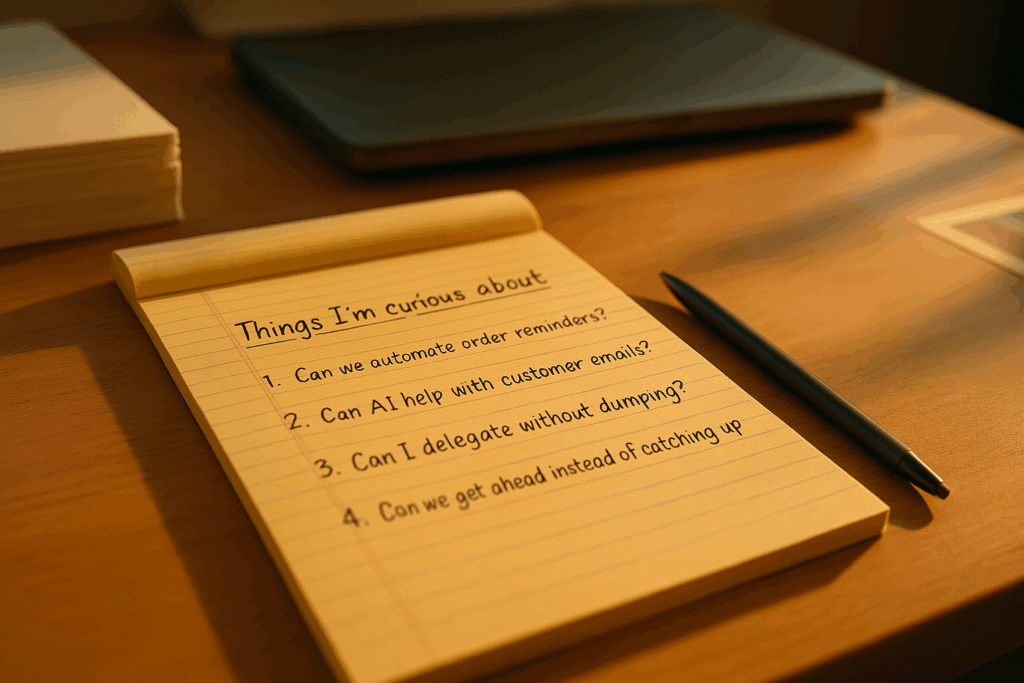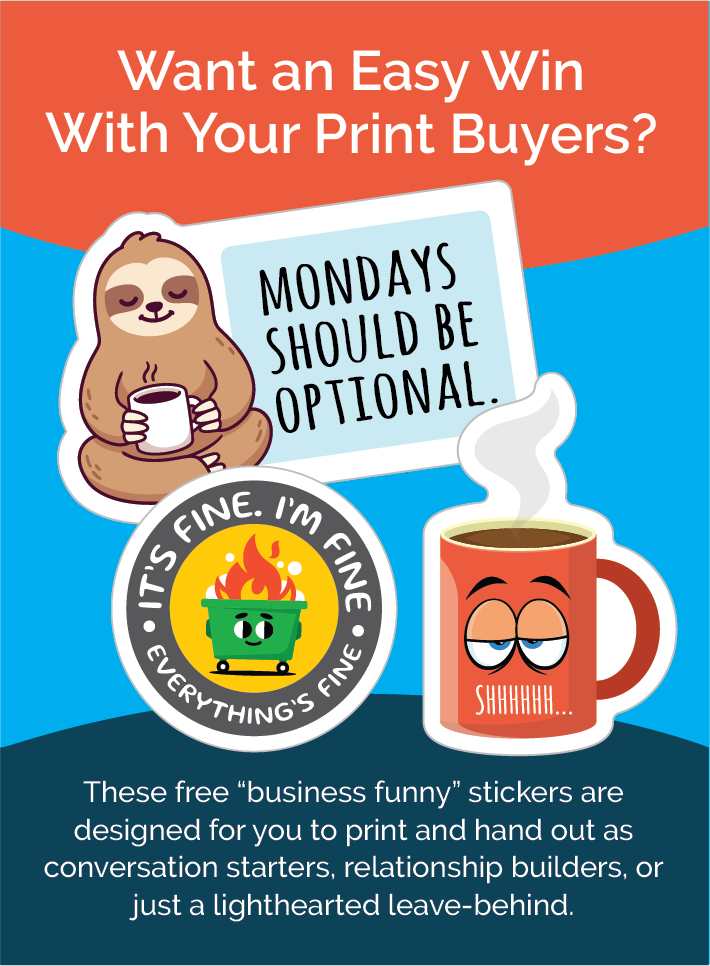When I shared Clay’s story last month, I described him as fictional but built from real conversations with printers just like you. That’s still true. Clay’s not here to tell you what to do. He’s here to help you see what’s possible.
And I’m here to walk with you as you figure out what your own AI journey might look like at your own pace, one step at a time.
This month, we check in on Clay as something begins to shift. His shop is steady. His people are solid. But deep down, he’s wondering: What happened to the spark?
Same Shop, Different Feeling
Monday morning at Riverbend Print & Sign looked exactly the same as it had for years. Clay Morgan walked into his main location at 7:58 a.m., coffee in hand, phone already buzzing.
Jess from the front desk gave him a quick update on the delayed install at McKenzie Automotive. Production had run into a material issue, but the customer was still “fine with it.”
Over at the cutter, his lead tech asked about reprinting a seasonal banner they’d done last year.

“Check the archive, it’s probably there,” Clay said, half-turned toward his screen.
It was all normal. Familiar. And that’s what bothered him.
Why does it feel like every day we’re fixing the same problems?
He sat down at his desk and stared at his to-do list. Jobs were moving. Customers were happy. Payroll was solid. But something felt off.
The business is working. So why do I feel like I’m babysitting it instead of leading it?
Bored Isn’t the Right Word
That afternoon, Clay paused in the doorway between production and the front office. One of the new hires was asking questions he’d heard a dozen times before. Jess was on the phone, again walking a client through a file format issue.
Clay wasn’t annoyed, but he wasn’t engaged either. He felt like a supporting character in his own business.
Later, he scrolled through his task list, mind half on the checklist, half on the voices in the next room.
Everyone’s working hard. But are we actually getting anywhere?
An Itch He Couldn’t Ignore
The feeling had been building for months.
It started after a lunch with Rob from Tiger Print, a shop owner Clay had known for years. Rob had recently sold his business—successful, profitable, and still growing.
“I just didn’t see a next step,” Rob had said. “It was a good ride. But it was starting to feel like a loop instead of a ladder.”
Clay hadn’t thought much of it then. But lately, the words stuck.
Through his industry association, Clay had been hearing about a few new shops gaining attention—streamlined operations, tight digital workflows, small teams moving quickly. They were using terms like “automated intake,” “predictive quoting,” “AI-powered workflows.”
Clay didn’t feel threatened, but he felt something he hadn’t felt in a while: off balance.
They’re not better than us. But they’re moving differently. What am I not seeing?
A Quiet Moment of Truth
That Friday, Clay met his wife for lunch at their favorite spot—grilled salmon for him, roasted chicken salad for her.
Over iced tea, he said it out loud for the first time.
“I don’t think I’m bored… but I’m not excited either.”
She didn’t respond right away. She just nodded, then asked:
“So what do you want to do about it?”
Clay didn’t have an answer.
But later that night, after closing his laptop and setting down his phone, he pulled out a notepad. At the top, he wrote:
Things I’m curious about.
Below that, he listed:
- Can we automate order reminders?
- Can AI help with customer emails?
- Can I delegate without dumping?
- Can we get ahead instead of catching up?
At the bottom of the page, he copied the words from the sticky note that had been sitting on his desk for two weeks:
Try one thing.

From Wandering to Wondering
That weekend, Clay walked through the shop when no one else was there. He stood at the offset press that had been with him since the beginning and thought about what it felt like to land that first big client. Back when everything still felt new.
I don’t want to burn it all down, he thought.
But I want to feel that momentum again.
He opened his laptop. Typed “AI tools for small business” into the search bar. Not to change everything. Just to look. Just to start.
Next month in the series
Clay opens a free AI tool and types his first prompt. The result? A small but powerful insight that changes the way he thinks about customer communication forever.



